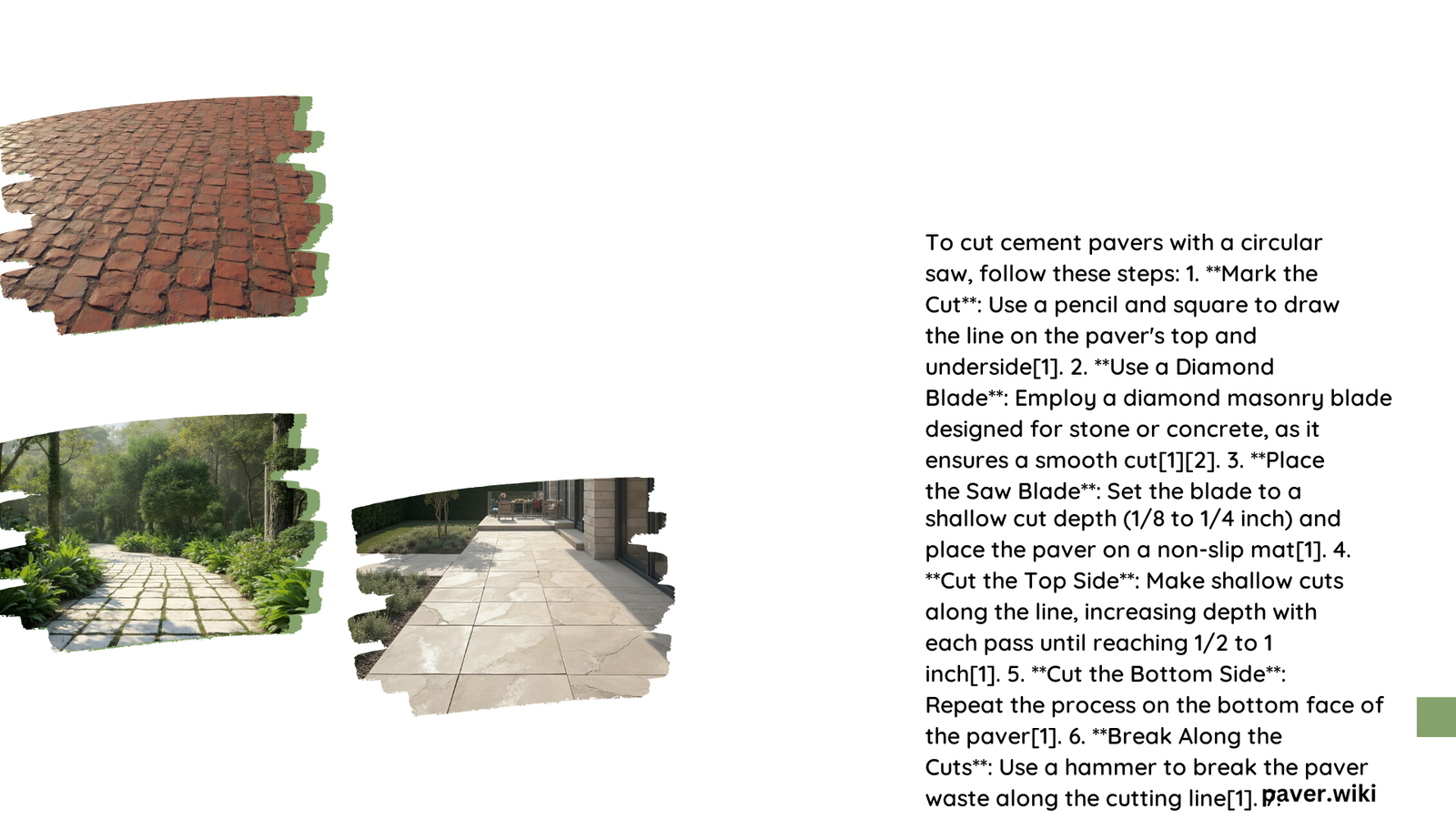Cutting cement pavers with a circular saw requires specific tools, techniques, and safety precautions. This guide covers the essential aspects of using a circular saw for cement pavers, including blade selection, cutting depth, wet vs. dry methods, and safety measures. Whether you’re a DIY enthusiast or a professional contractor, understanding these key points will help you achieve clean, precise cuts while maintaining safety and efficiency.
What Are the Best Circular Saw Blades for Cement Pavers?
Selecting the right blade is crucial for cutting cement pavers effectively. Here are the key specifications to consider:
- Blade Material:
- Polycrystalline Diamond (PCD) teeth or PCD-faced carbide tips
-
Offers exceptional durability and extended cutting life
-
Tooth Count:
- Lower tooth counts are preferred for cement pavers
-
Common configurations:
- 4-tooth for 7-1/4\” blades
- 6-tooth for 10\” blades
- 8-tooth for 12\” blades
-
Blade Diameter:
- 7-1/4\” (184 mm)
- 10\” (254 mm)
- 12\” (305 mm)
| Blade Diameter | Typical Tooth Count | Best For |
|---|---|---|
| 7-1/4\” | 4 | Thinner pavers, portable saws |
| 10\” | 6 | Medium thickness, versatile use |
| 12\” | 8 | Thicker pavers, larger projects |
How Deep Should You Cut Cement Pavers?

The optimal cutting depth depends on the paver thickness and blade capabilities:
- General Rule: Set the blade to cut slightly deeper than the paver thickness
- Specific Depths:
- For 1/2 inch (13 mm) pavers: Use a 7-1/4\” blade with 0.063\” (1.6 mm) kerf
- For 1 inch (25 mm) pavers: Consider 10\” or 12\” blades for adequate depth
Remember to adjust the blade depth for each specific paver thickness to ensure clean cuts and minimize blade wear.
What Are the Pros and Cons of Wet vs. Dry Cutting?
Wet Cutting
Pros:
– Reduces dust generation
– Cools the blade, increasing longevity
– Cleaner and safer work environment
Cons:
– Requires water source and setup
– May not suit all saw types or environments
Dry Cutting
Pros:
– More convenient setup
– Faster cutting process
– No water source needed
Cons:
– Generates significant dust
– Faster blade wear and potential overheating
– Requires additional safety measures
Choose the method that best suits your project requirements, work environment, and available resources.
What Safety Precautions Should You Take When Cutting Cement Pavers?
Safety is paramount when using a circular saw for cement pavers. Follow these essential precautions:
- Personal Protective Equipment (PPE):
- Eye protection (safety glasses or goggles)
- Dust mask or respirator
- Non-skid safety shoes
- Hard hat
-
Hearing protection
-
Operational Best Practices:
- Read and follow the saw’s instruction manual
- Inspect the blade for damage before use
- Use the correct blade size and arbor hole shape
- Mount the blade properly with correct washers and bolt
- Ensure blade speed matches or exceeds the saw’s no-load RPM
- Never operate without proper safety guards
How to Choose the Right Circular Saw for Cement Pavers?
When selecting a circular saw for cutting cement pavers, consider these factors:
- Power: Look for saws with at least 15 amps for adequate cutting power
- Blade Compatibility: Ensure the saw accepts the appropriate blade sizes (7-1/4\”, 10\”, or 12\”)
- Dust Collection: Some models offer built-in dust collection systems
- Ergonomics: Choose a saw with comfortable grips and balanced weight
- Adjustability: Look for easy depth and bevel adjustments
What Techniques Improve Cutting Accuracy on Cement Pavers?
To achieve precise cuts on cement pavers:
- Mark cutting lines clearly with a pencil or chalk
- Use a straight edge or guide rail for long, straight cuts
- Start the saw before contacting the paver
- Maintain a steady, consistent speed while cutting
- Allow the blade to do the work – avoid forcing the saw
- For curved cuts, make multiple straight cuts to approximate the curve
How to Maintain Your Circular Saw for Cement Paver Cutting?
Proper maintenance ensures longevity and performance:
- Clean the saw after each use, removing dust and debris
- Regularly inspect and tighten all fasteners
- Lubricate moving parts as recommended by the manufacturer
- Store the saw in a dry, clean environment
- Sharpen or replace blades when cutting becomes less efficient
- Check and replace worn power cords or switches
By following these guidelines, you’ll be well-equipped to tackle cement paver cutting projects with confidence and precision. Remember to prioritize safety, choose the right tools, and maintain your equipment for the best results.
